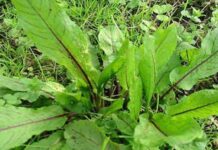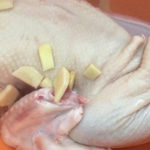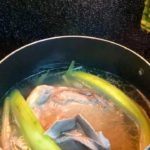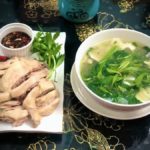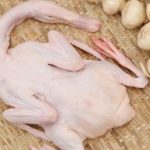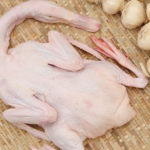Ingredients for Boiled Duck
1 duck, approximately 2kg
2 fresh ginger roots
1 shallot
Rice vinegar
White wine
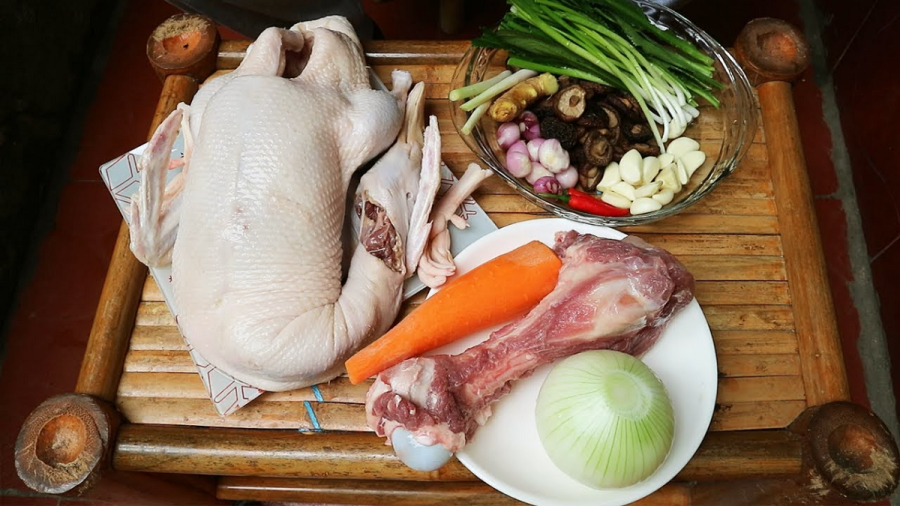
Ingredients for Boiled Duck
Selecting and Preparing the Duck
Choose a duck that is around 60-80 days old for the best flavor. Look for a duck with a round breast, smooth feathers, long wings that cross beneath the tail, and a thin, soft callus on the bottom of its foot. Avoid young ducks, as they tend to be small and watery. Avoid older ducks as well, as their meat is tough.
To remove any odor before slaughtering the duck, give it a drink of white wine or lemon juice. Cut off the oil sac, where the glandular fluid is concentrated, to ensure cleanliness and reduce odor. After cleaning and plucking the feathers, scrub the duck with lemon and salt and rinse thoroughly. Continue by rubbing the duck with white wine and crushed ginger and rinsing it off. Thorough cleaning will result in a boiled duck with flavorful meat and no odor.
How to Boil Duck with a Rich Flavor
Step 1: Prepare the Duck
When purchasing a live duck, you can ask the seller to butcher it for you, or you can do it yourself at home. After the duck has been slaughtered, dip it in boiling water to remove the feathers. You will notice a black liquid in the pores on the duck’s body; squeeze it out and rinse thoroughly, as it contributes to the duck’s odor.
If there is any residue (a yellow substance that remains after cutting off the duck’s anus), it will also create an unpleasant odor that can ruin the delicious duck dish.
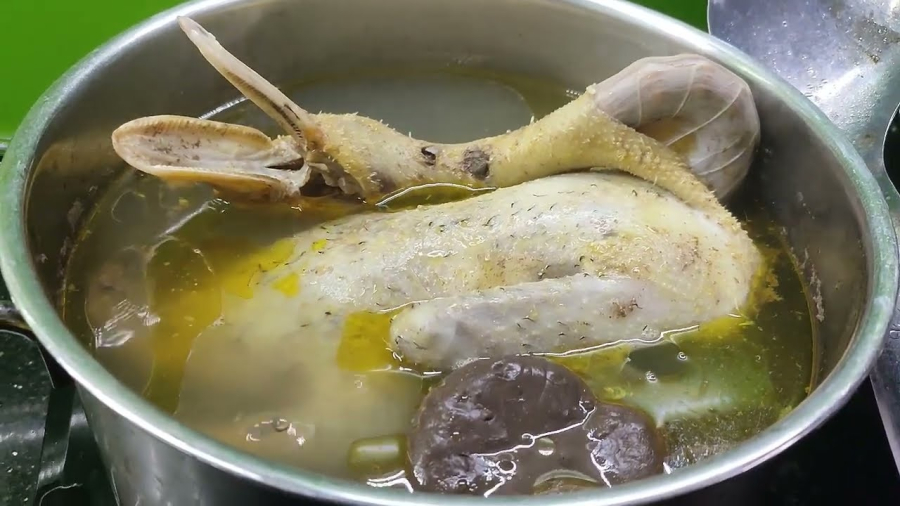
Don’t forget to remove the dirty tongue from the duck’s beak!
Step 2: Remove Odor from the Duck Meat
This is an important step. Even after cleaning the feathers and removing the oil sac, the duck meat will still have a characteristic odor that can be unpleasant if not properly prepared.
Scrub the duck inside and out with coarse salt and rinse it. Then, cut a few slices of ginger and rub them on the duck before rinsing it again. Ginger effectively removes the odor and enhances the flavor when the duck is boiled.
If you want to be more thorough, you can use white wine, ginger wine, or rice vinegar to rinse the duck and then rinse it again with water. This will ensure that there is no odor left.
Step 3: Boil the Duck
Tender duck meat depends largely on the ingredients and the boiling method. Bring a pot of water to a boil with enough water to cover the duck. Add 1 crushed ginger root, 1 roasted shallot, or 1 roasted ginger root to the water. These ingredients will infuse the boiled duck with a delicious aroma.
When boiling the duck, avoid using high heat. Once the water boils, reduce heat to low and simmer for 20-30 minutes to allow the duck to cook slowly.
After simmering for about 20 minutes, insert a skewer into the duck’s thigh. If the juices run clear, the duck is cooked through. Remove from the heat, let cool slightly, and carve into pieces to serve immediately.
Step 4: Carve the Duck and Arrange It on a Plate
When the duck is freshly boiled, the meat will be tender and more flavorful when carved immediately (unlike chicken, which should be cooled before carving). Carve the duck into bite-sized pieces and arrange them on a plate.
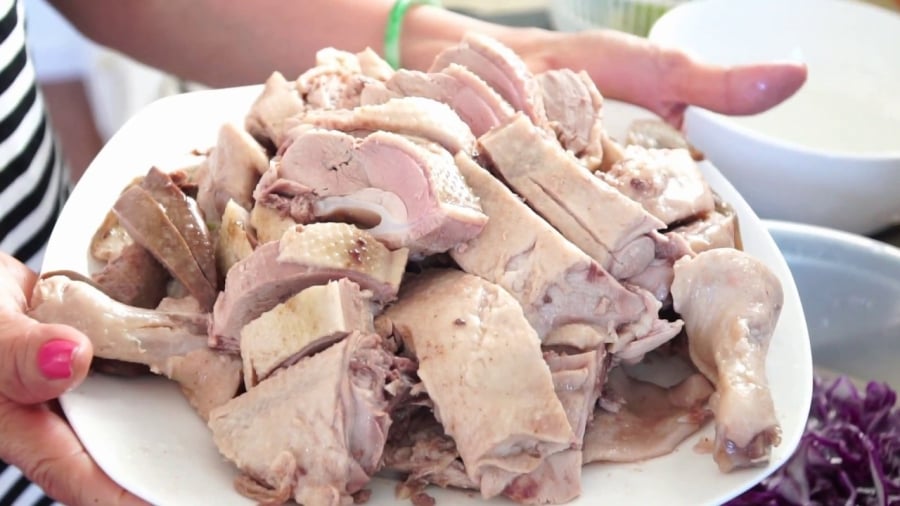
Tender Boiled Duck with No Odor
Important Notes:
Thoroughly clean the duck (remove the oil sac, scrub with lemon and salt or a mixture of wine and ginger) to remove any odor before boiling.
Boil the duck in simmering water to prevent blood stains and a fishy taste. Add a little onion, crushed ginger (which should be scrubbed but not peeled to release more essential oils), and seasoning to enhance the flavor.
Duck meat is cold by nature, so it is important to combine the dipping sauce with warm spices like ginger and chili to balance the yin and yang.
Duck meat is high in protein, iron, calcium, and vitamins A, B1, and D, making it beneficial for people who are underweight and want to gain weight. However, because duck meat is cold by nature, tough, and difficult to digest, it is important to limit consumption for those with weak stomachs or poor digestion.
Look for a duck with specific characteristics: a round breast, smooth feathers, long wings that cross beneath the tail, and a thin, soft callus on the bottom of its foot. Avoid both young and older ducks as they won’t provide the best flavor. To prepare, start by removing any odor by giving the duck a drink of white wine or lemon juice. Cut off the oil sac to ensure cleanliness and reduce odor. Clean and pluck the feathers, then scrub the duck with lemon, salt, and white wine/ginger. Rinse thoroughly.
First, prepare the duck by dipping it in boiling water to remove the feathers and squeezing out any black liquid from the pores. This will help reduce any odor. You can ask the seller to butcher the duck for you, or do it yourself at home. Next, boil some water with crushed ginger root, a roasted shallot, or roasted ginger root. Add the duck and simmer on low heat for 20-30 minutes. The duck is cooked when juices run clear when a skewer is inserted into the thigh.
Scrub the duck inside and out with coarse salt and rinse. Cut slices of ginger and rub them on the duck, then rinse again. You can also use white wine, ginger wine, or rice vinegar for an extra thorough job.
Unlike chicken, duck is best carved when freshly boiled as the meat will be more tender and flavorful. Cut the duck into bite-sized pieces and arrange them on a plate.
Yes, always thoroughly clean the duck before boiling to remove any odor. Boil the duck in simmering water to prevent blood stains and a fishy taste. Duck meat is cold by nature, so balance it with warm spices like ginger and chili in the dipping sauce. Duck meat is also high in protein and various vitamins, but it can be tough and difficult to digest, so limit consumption if you have a sensitive stomach.























